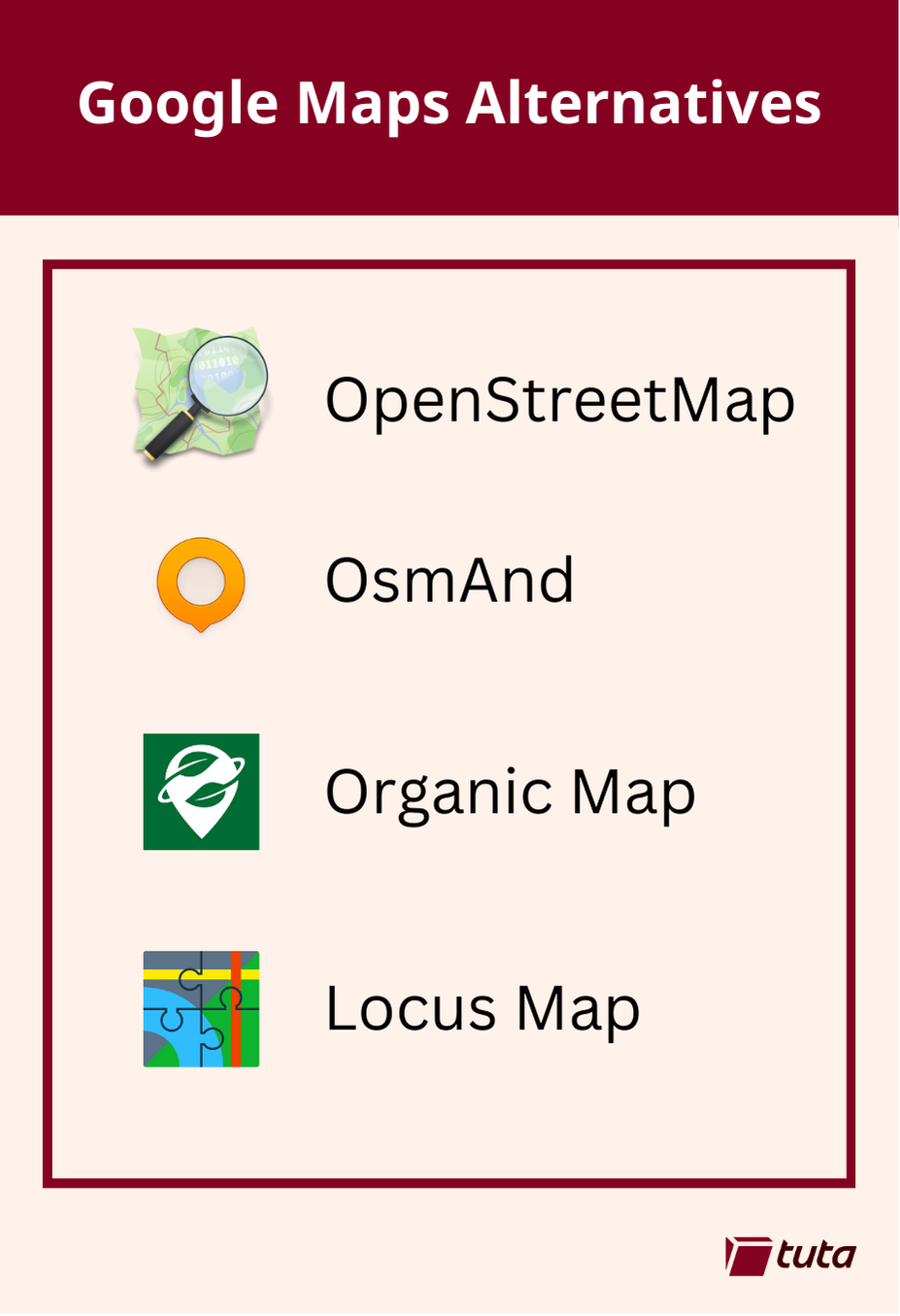- cross-posted to:
- privacy@lemmy.ml
- privacyguides@lemmy.one
- cross-posted to:
- privacy@lemmy.ml
- privacyguides@lemmy.one
repeated media reports of Google’s disregard for the privacy of the general public led to a push for open source, community driven alternatives to Google Maps. The biggest contender, now used by Google’s direct competitors and open source projects alike is OpenStreetMap.
- OsmAnd
OsmAnd is a fantastic choice when searching for an alternative to Google Maps. It is available on both Android and iOS devices with both free and paid subscription options. Free accounts have full access to maps and navigation features, but choosing a paid subscription will allow you unlimited map downloads and increases the frequency of updates.
All subscriptions can take advantage of turn-by-turn navigation, route planning, map markers, and all the favorite features you expect from a map and navigation app in 2024. By making the jump to a paid subscription you get some extra features like topo maps, nautical depths, and even point-of-interest data imported from Wikipedia.
- Organic Maps
Organic Maps is a great choice primarily because they offer support for all features of their iOS and Android apps completely offline. This means if you have an old phone laying around, you can install the app, download the maps you need and presto! You now have an indepth digital map in the palm of your hand without needing to worry about losing or damaging your primary mobile device when exploring the outdoors.
Organic Maps tugs our heartstrings by their commitment to privacy. The app can run entirely without a network connection and comes with no ads, tracking, data collection, and best of all no registration.
- Locus Maps
Our third, and last recommendation today is Locus Maps. Locus Maps is built by outdoor enthusiasts for the same community. Hiking, biking, and geocaching are all mainstays of the Locus App, alongside standard street map navigation as well.
Locus is available in its complete version for Android, and an early version is available for iOS which is continuing to be worked on. Locus Maps offers navigation, tracking and routes, and also information on points-of-interest you might visit or stumble upon during your adventures.



What a bizarre comment. Of course I need traffic data in a navigation app. Why would I want to sit in an hour queue on a closed motorway due to an incident when I could be using the alternative route that’s still moving?
It may just be a difference in use case. I don’t use navigation apps for my daily and local trips. I use navigation when I’m going to be driving hundreds of miles to a new location and don’t already know how to get there.
I use it both daily and for long trips. I use it daily because as I’ve said when I don’t use it, I get stuck in a queue on the motorway that was easily avoided with traffic info. And also for long trips because again, there are multiple routes and there could be hours difference between them depending on traffic. I frequently travel from North England to London and depending on the day I’ll use a route either on the western side or eastern side of the country based on the traffic.